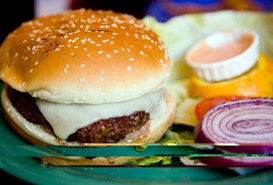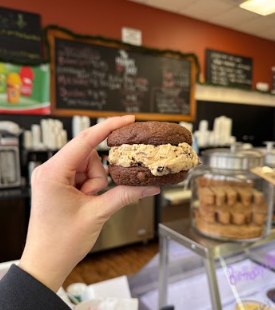“Food marketing is everywhere. It’s powerful, and it’s effective. It’s particularly effective for children and teens, a much more vulnerable audience.” says the Obesity Action Coalition. As you look at TV commercials, grocery isles, and bright-colored cartoons on different foods, a conclusion can be made that foods are being marketed towards kids when these foods shouldn’t even be allowed to be marketed towards anyone or sold. The Obesity Action Coalition also says, “Today’s food environment makes it very difficult to feed children a healthy diet. Unhealthy food is everywhere; it’s easy to get, quick, and often costs less than healthy food.” Elizabeth Crognale, a middle school teacher at Log College Middle School, says, “These foods are commonly seen throughout the school day in the cafeteria. It’s very normal to see kids eating unhealthy foods.” The combination of food marketing being seen everywhere and kids’ foods being unhealthy equals long-lasting health effects on kids’ health, and something must change.
A specific example is the many snacks kids enjoy, like Doritos, Skittles, and Kool-Aid, which all contain the food dye red-40. Red-40 is an FDA-approved food dye used in many foods and snacks kids are being shown and loving. According to verywellhealth, “There is substantial evidence that red dye 40 exacerbates ADHD symptoms, including hyperactivity and irritability. It has also been found to trigger behavioral changes in sensitive children who do not have pre-existing behavioral disorders.” Red-40 is just the tip of the iceberg, there are many other dyes, preservatives, and flavors that raise concerns, considering the ingredients in these kids’ foods are not the same ingredients in the same foods in other countries. If other countries are banning these dangerous ingredients, why should they be allowed in children’s foods in America?
Weight Loss for Kids claims that switching unhealthy to healthy foods is difficult. They claim these unhealthy snacks are much cheaper than healthier snacks and easier to have than whole foods. Of course, it is impossible to eliminate unhealthy foods from kids’ diets completely, but maintaining a balanced diet can work, too. Also, getting kids outside and getting them active is important to their health too. Incorporating more healthy foods and being active can improve a child’s overall health too. Cade Bachman, a student-athlete at Pennridge says, “Growing up playing sports with my siblings was definitely important to my childhood. It made me stay healthy despite having junk food once in a while. Many pediatricians suggest the 80/20 rule, as 80 percent of a kid’s diet comes from healthy food while 20 percent can be unhealthy. The dangers of kids’ current diets should be spread more, and parents should pay closer attention to what they feed their kids daily, and how active these kids are. Certain simple changes can improve a kid’s health and the rest of their life.





